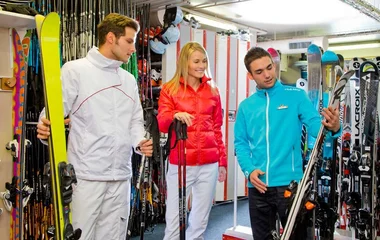Cross-country skiing uses all the major muscle groups at the same time, which combined with being at a higher altitude in the mountains (even if you are at resort level) means you will be burning a good deal of cardiovascular energy. So get fit with ski exercises > !
Roller-skiing is a great option to build the right muscles, as is a cross-country skiing machine. Swiss balls are great practice for balance, as well as a routine of single leg squats. "Training for your cross-country skiing holiday is about core strength and teaching your legs to work independently", says Fern. "It's about getting all your weight on one leg, transferring your weight from one leg to another, and getting your hips, legs and toes in one line."
Finally, when you’re setting out on your first cross-country skiing holiday, take some Tiger Balm, Biofreeze or similar for the inevitable aching muscles – and spend plenty of time in the hot tub and sauna at the end of the day.
If you’re cross-country skiing in France >, Switzerland > or Austria, these will surely be in plentiful supply.







